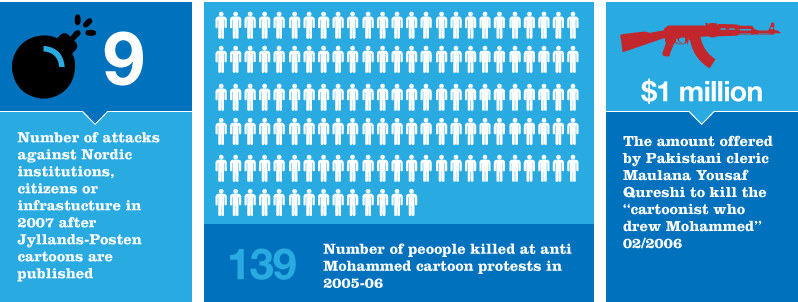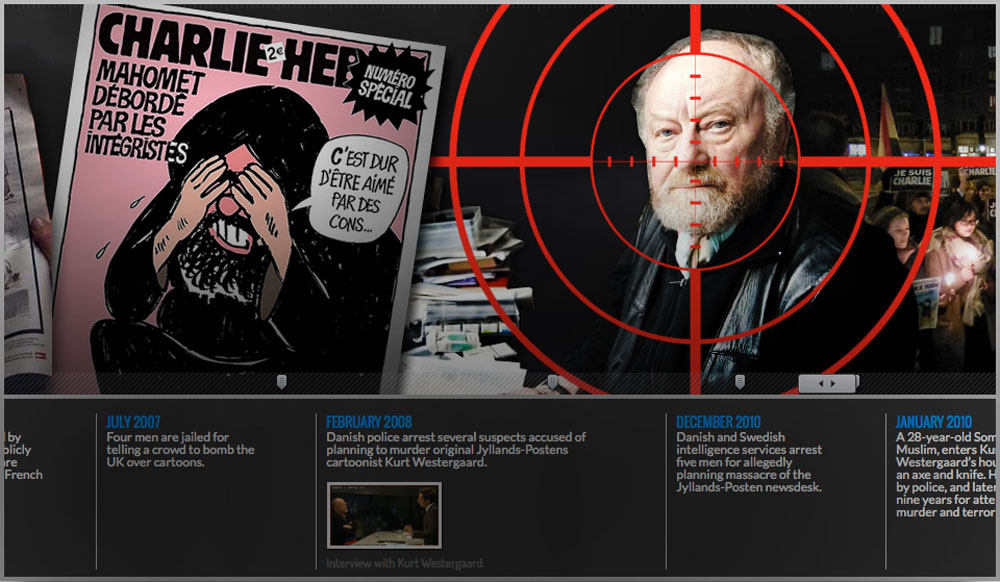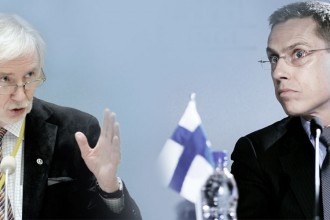USE YOUR MOUSE OR FINGER TO SCROLL THROUGH THE UPNORTH INTERACTIVE TIMELINE ABOVE
In September 2005, Danish newspaper, Jyllands-Posten became the first western publication to publish cartoons depicting the Prophet Mohammed. Cultural editor, Flemming Rose justified the publication of the twelve caricatures as the newspaper’s contribution to the debate about free expression and the criticism of Islam:
“Modern, secular society is rejected by some Muslims. They demand a special position, insisting on special consideration of their own religious feelings. It is incompatible with contemporary democracy and freedom of speech, where one must be ready to put up with insults, mockery and ridicule. It is certainly not always attractive and nice to look at, and it does not mean that religious feelings should be made fun of at any price, but that is of minor importance in the present context. … we are on our way to a slippery slope where no-one can tell how the self-censorship will end. That is why Morgenavisen Jyllands-Posten has invited members of the Danish editorial cartoonists union to draw Muhammad as they see him.”
The publication of the cartoons triggered global protests which left many dead and led to a constant string of death threats to both the staff at Jyllands-Posten and the cartoonists themselves. Kurt Westergaard, who drew a provocative image of Muhammad with his turban as a bomb, was targeted several times and was attacked by an axe and knife wielding Somali muslim man who broke into his home in 2010.


Along with several other European publications, editors at France’s Charlie Hebdo followed the Danish newspaper and published their own caricatures of Muhammed, earning them the condemnation of the Muslim community and threats of death and violence by extremists.
INTERVIEW WITH JYLLANDS-POSTEN CULTURAL EDITOR FLEMMING ROSE
In an interview on January 14, Jyllands-Posten Cultural editor, Flemming Rose, told BBC’s Hardtalk that his newspaper had yielded to the pressure of constant threats and decided against republishing the Charlie Hebdo covers. Without the broad support of other western media for free expression and against censorship and intimidation, he warned that, “sometimes the sword is mightier than the pen.”
Despite a decade of ongoing – often violent- intimidation, the press in the Nordic region remains the most liberal in the world according to the Reporters Without Borders, Press Freedom Index.
[edge_animation id=”2″ left=”auto” top=”0″]



